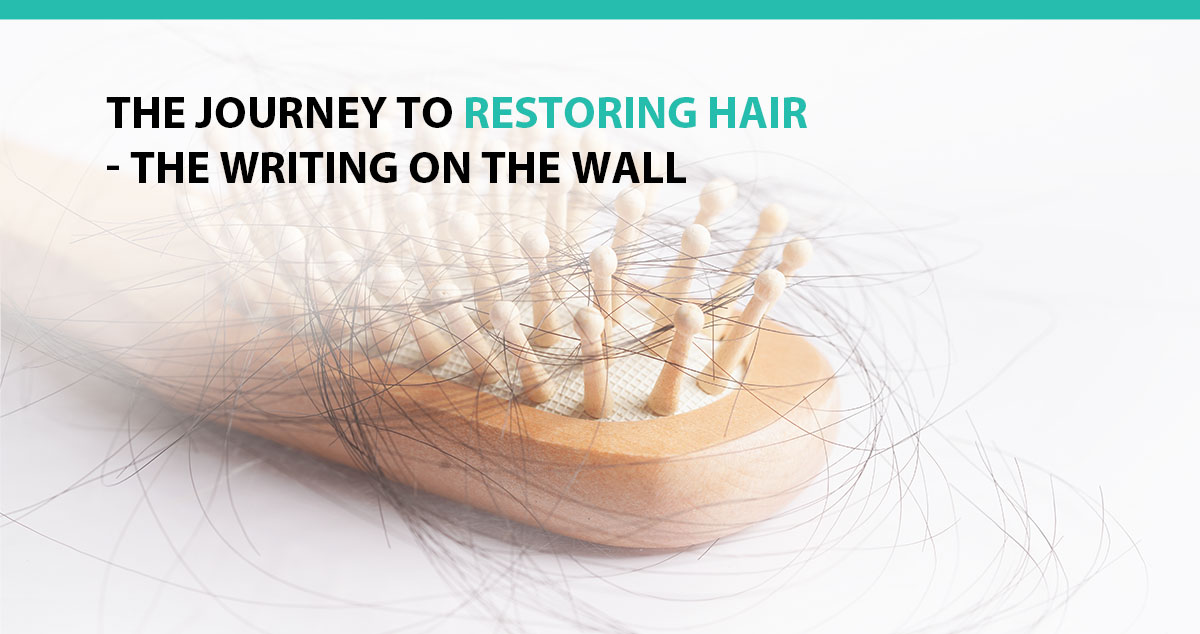
Anytime we find ourselves facing challenges in life, we have an opportunity to meditate on the path ahead and then take the first step. Regardless of the difficulty level, a checklist can certainly help us get from A to B without missing any critical steps.
While hair loss may not be on the same scale as worldly problems like famine and natural disasters, it’s our business here at Advanced Medical Hair Institute to help those affected know their choices moving forward, because, as far as we know, we do get just the one lifetime. And there’s nothing wrong with wanting to have it the way you want it.
And because there are multiple steps along this journey, this guide will need to span more than one article. So where to begin? At the beginning – the moment you realize a difference in your hairline or its thickness.
Seeing Signs of Balding…
Hair loss may occur for several reasons ranging from medication and stress to genetics. Since it affects everyone differently, some people start experiencing hair loss as early as in their 20s, while others start noticing it in their 50s. In most cases, male pattern baldness occurs gradually, which makes it difficult to detect. Fortunately, there are always distinct signs that can help you identify the onset of alopecia for you to take action.
- Receding Hairline
Hair loss in men usually begins from the temples. If you notice that your hairline is receding, you may be experiencing a case of male pattern baldness. Usually, you start losing hair from your temples, which causes your hairline to form a deep M shape. In severe cases, the hairline may recede leaving only a strip of hair at the back and sides of your head.
Since it can be challenging to monitor a receding hairline, taking pictures every month can help. Doing so will help you keep track of your hairline and establish whether you need to see a hair specialist. Ensure that you take the pictures in the same lighting conditions, as some lighting may make your hair look thinner than it is.
- Hair Thinning
While a receding hairline is the most common hair loss symptom in men, some people experience diffuse thinning. This refers to losing hair gradually from the entire scalp or the crown of the head downwards. Hair thinning on your scalp can point to male-pattern baldness. Like in the case of a receding hairline, you can take photos of your hair every few months for comparison. You may also notice hair thinning on your eyebrows, beard, or lashes which may eventually lead to hair loss throughout the body.
- Noticeable Hair Loss When Showering or Brushing
We shed approximately 100 hairs every day. Therefore, losing some hair when combing, brushing, or showering should not be cause for alarm. You may also notice more shedding if you go days without combing or washing your hair. However, if you start shedding more hair every day when showering or brushing, it could be a sign of alopecia.
While it may point to androgenetic alopecia, it may also be a sign of temporary hair loss due to medication, stress, or even fever. Temporary hair loss goes away once you deal with the underlying cause, keeping in mind there is a small chance the cause is not genetic. As a rule of thumb, you should always seek professional help if you start losing excess hair, so you can find the sources and boost your chances of successful treatment.
- Nail Changes
Your nails can tell you a lot about your health and can be one of the best indicators of alopecia. Check your nails and nailbeds for white lines, rough edges, pitting, or small craters, as they are signs of alopecia. The changes can occur on one or multiple nails and may affect your fingers or toes. While other conditions like fungus and trauma may change your nail’s appearance, you should visit a hair specialist if the changes come with hair loss.
Doing Your Homework…
Educating yourself to narrow down acceptable choices is always a good idea. There are many things to ponder, and then decide which path makes the most sense for you. Here are some of those considerations.
- Suitable Procedure
There are two main types of hair transplant procedures. We will cover both of those, along with alternative options, in another section.
- Age
Under some circumstances, you might start losing hair in your late 20s or earlier. The cause could be an aggressive production of the dihydrotestosterone (DHT) hormone by your body. This modified type of testosterone attacks and eventually shrinks hair follicles on your scalp to the point of stopping hair production altogether.
Although you might want to start the procedure as soon as your hair loss starts, it’s advisable to wait a little longer. Once you hit your 40s, the balding process will be complete, which will make the transplant procedure easier to implement. But your timing is a personal choice.
- Cost
It’s natural to inquire about the costs of any procedure you intend to undergo. Various factors determine hair restoration fees. They include the size of your bald patch and the volume of hair needed, the type of transplant procedure, the location of your preferred facility, and associated costs such as travel.
Because FUE procedures are more advanced, they tend to cost more than FUT. The surgeon’s expertise also comes into play. A renowned surgeon like Dr. Joseph Williams guarantees the highest quality work. He will naturally charge a reasonable price commensurate with his skills and the desired results.
Most insurers don’t cover hair transplant surgeries because they consider them to be cosmetic procedures. Although this arrangement sounds expensive to some, the benefits will be more than worth it.
- Skin Type and Ethnicity
These factors play a huge role in preparing for your procedure. The highest rates of male pattern baldness occur in Caucasian males, with Afro-Caribbeans coming in second. The problem is not as widespread among Asians. Your ethnicity allows us to craft a customized treatment plan that matches both your skin and hair.
- Preparation and Expected Recovery Time
Before the procedure, you’ll receive recommendations on best practices to observe. Hair transplant surgery has some of the lowest risks compared to other elective surgeries. The highest quality procedures result in a successful growth rate of more than 90%, with some being higher than 95%.
We’ll be back next time with more information for your journey, covering the topics below.
- Finding Out What You Can Do…
- Considering a Hair Transplant…
- Finding a Doctor…
- Considering Medication and Other Alternatives…
- Transplant Expectations…
- Transplant Preparation…
- Transplant Procedure Day…
- After-Procedure Care and Timeline…
- Your New Look; Your Next Chapter…










